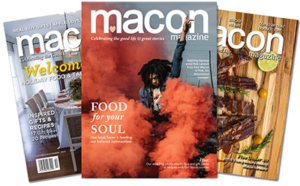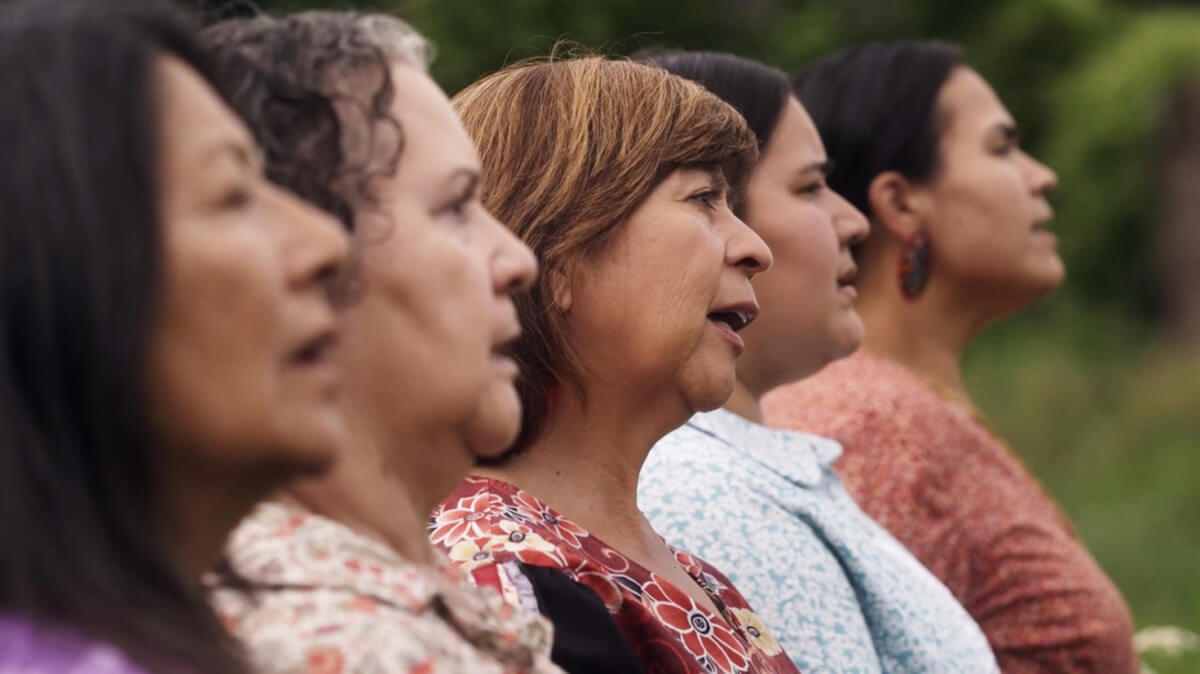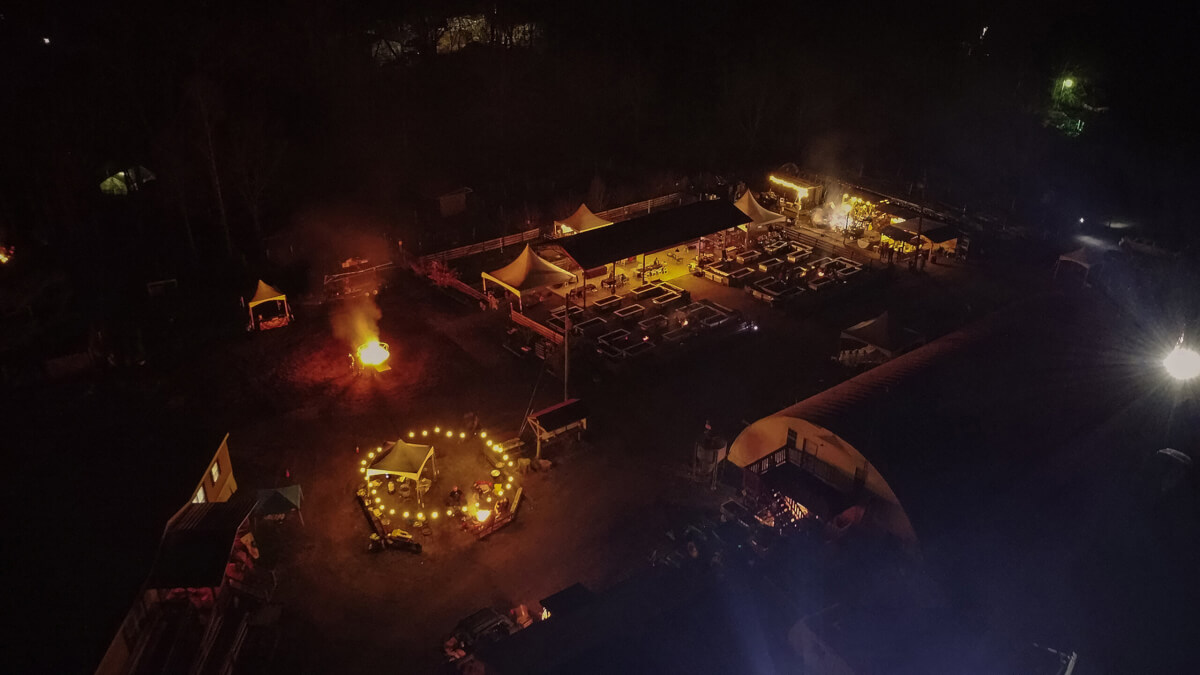
Comfort in the Cold
Story by Mike Young and Sierra Stark Stevens | Photos by Mike Young
Every year around this time, a group of farmers, butchers, chefs, food lovers, and veterans come from all over the country to Central Georgia to put on a gastronomical and educational tradition known as the Le Pie du Mont Boucherie. It’s held at Comfort Farms, the nation’s first Acute Veterans Crisis Agriculture Center, an agro-therapy farming initiative that gives veterans with post-traumatic stress disorder and other invisible disabilities a place to heal, learn new skills, and transition back to civilian life.
A boucherie is a Cajun tradition predating refrigeration, in which communities gather to share the workload of butchering a whole animal, usually a hog, to provide sustenance for the long winter months and pass down cultural practices across generations. Each scrap is utilized or preserved, resulting in a wide array of dishes – from the barbecue you might expect to the head cheese and blood soup that might surprise you.
This Boucherie is a celebration of food and camaraderie featuring some of the best culinary voices in the country. In today’s celebrity chef culture, it would be easy to assume the chefs are the stars here. But for this weekend, they all blend into the gathering. Nobody is here to promote themselves or their new restaurant. It feels more like a commune than a cooking demo.
For three days, the group cooks around the clock to raise funds and awareness for Comfort Farms’ mission. People interested in heritage foodways, whole-animal cooking, and creative collaboration come from as far as Chicago, New York, New Orleans, and California, alongside many local participants, for this profoundly unique culinary event. It is all held together by Jon Jackson, owner-operator of the farm and founder of STAG Vets, Inc. The following recounts just one day of the three days at each Boucherie, just one year of seven.
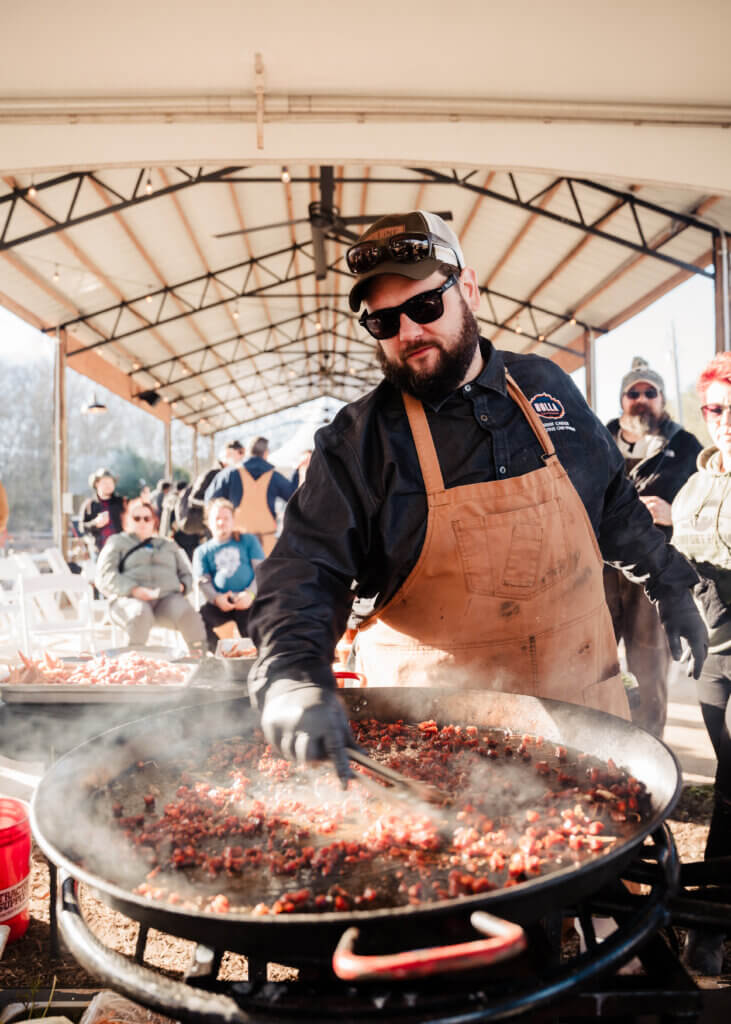
Chef Brian’s Paella demo.
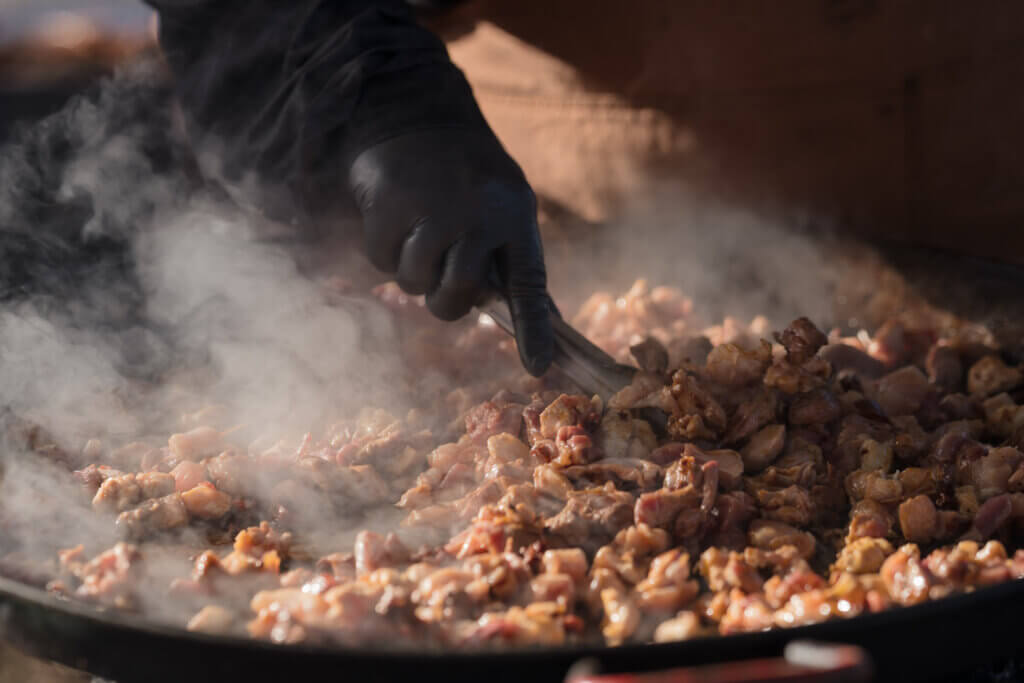
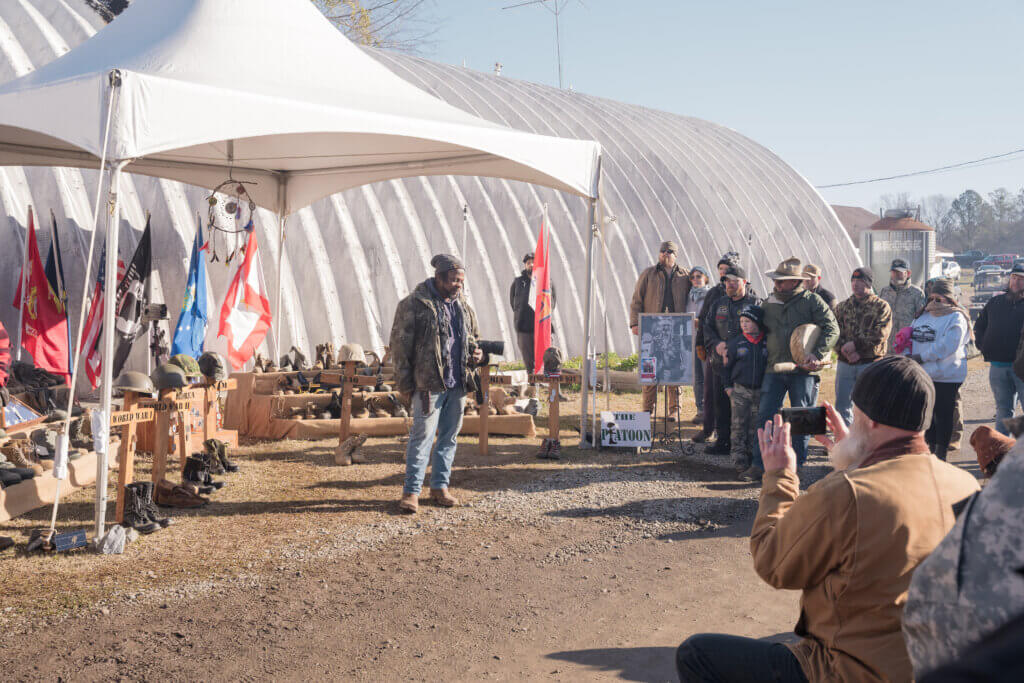
Jon addresses the crowd. The veterans represented by the boots and dog tags are known as “The Platoon.”
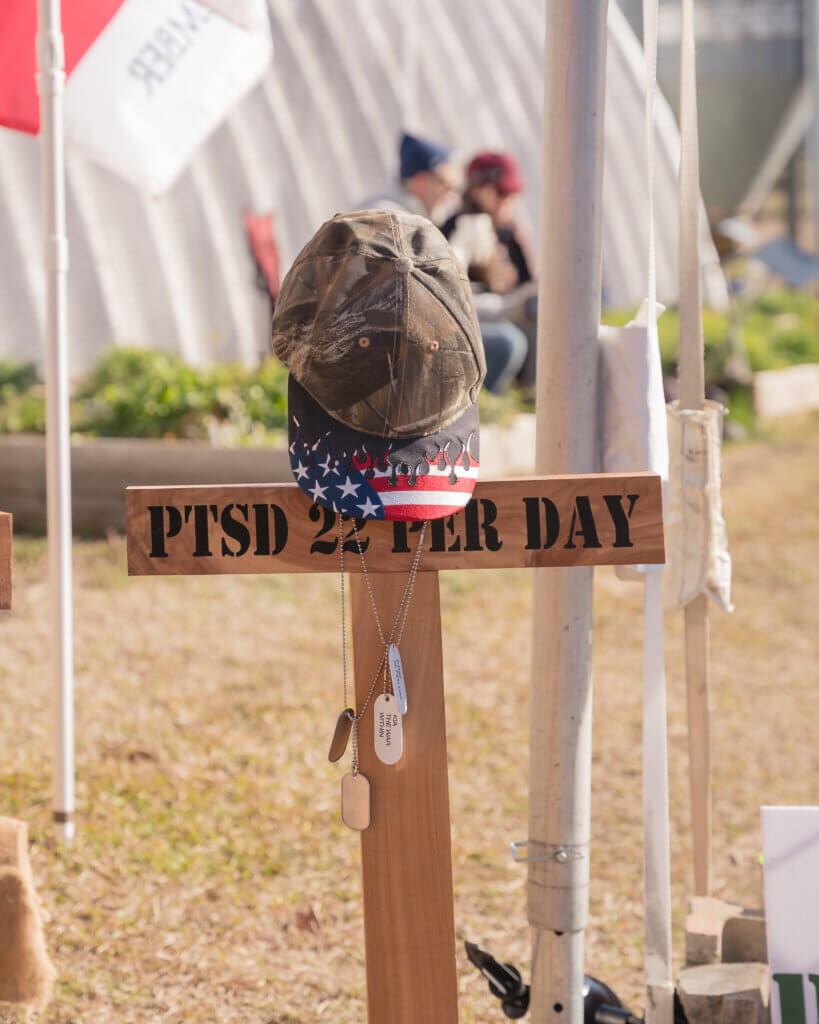
The display of the fallen Platoon is visible from all stations at the event, keeping the event’s purpose in sight at all times.
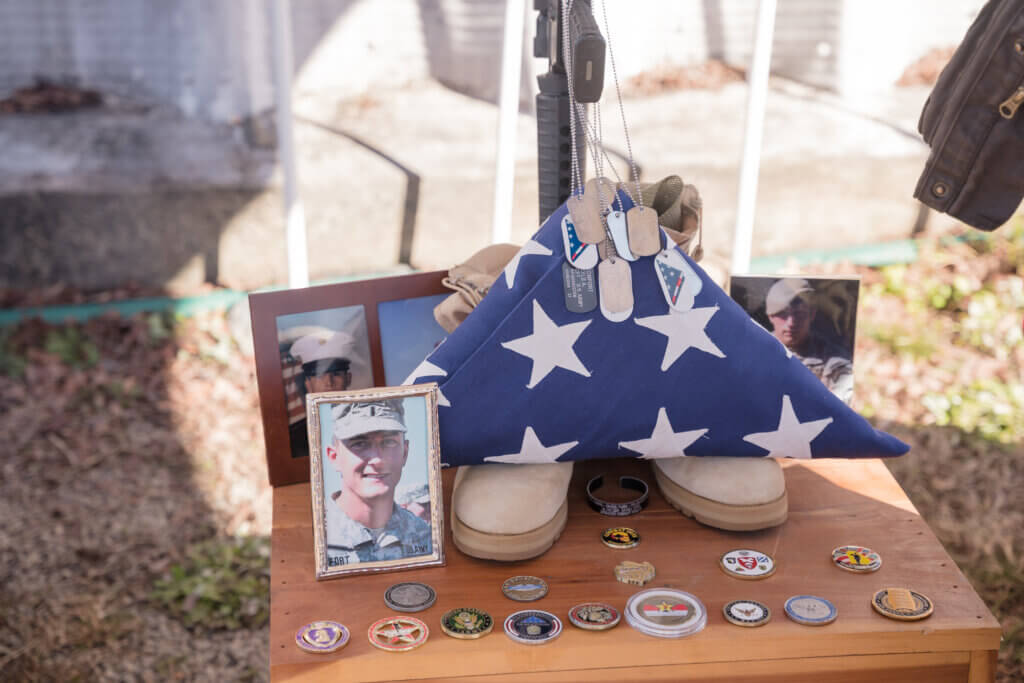
The flag folded during the opening ceremony is placed beside this portrait of Capt. Kyle Comfort.
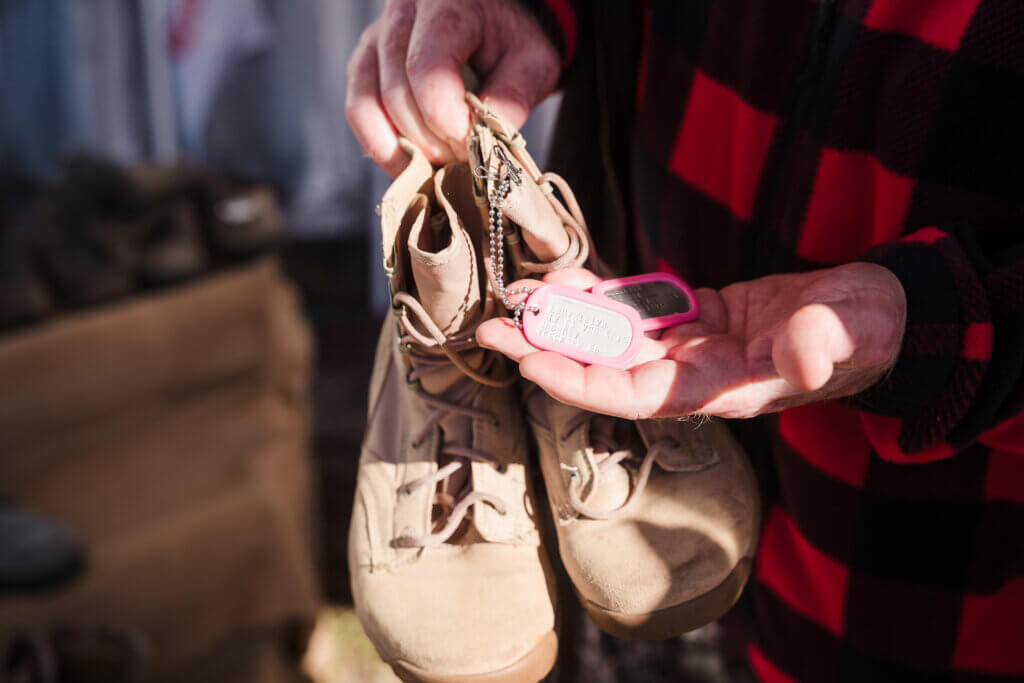
Critter shows us the small boots of an Amry nurse.
The Platoon
It begins with a ceremony. We gather around a poignant display of combat boots worn by U.S. troops. Dog tags hang from crosses marked with each major war, surrounded by pictures of the fallen. In the center is a photo of Army Capt. Kyle A. Comfort, the namesake of Comfort Farms, where we find ourselves this cold January morning. Jon served with Kyle at Fort Benning and on several tours of active duty, where the two Rangers formed a strong bond of friendship. In 2010, at 27 years old, Comfort was killed by an improvised explosive device when insurgents attacked his unit in Afghanistan. Jon carried his captain’s lifeless body to the helicopter. In a later incident, Jon suffered a traumatic brain injury, and the diagnosis and subsequent battles with post-traumatic stress disorder led to his medical retirement from the military in 2013. After struggling with thoughts of suicide, he founded Comfort Farms as a place for veterans at high risk of suicide or facing homelessness.
As the ceremony progresses, two veterans perform a flag folding and solemnly place the triangle of stars and stripes alongside Comfort’s portrait. Then, loved ones in the crowd come forward to hang their fallen soldiers’ dog tags around each cross, each kneeling, then standing to salute while a drum is beaten and a chant is sung. As the drum fades, the bagpipes begin. Then, Jon comes to address the gathered crowd.
Standing beside the last cross, marked PTSD 22 PER DAY, Jon shakily begins speaking. “We always kick it off with this memorial to get everybody’s mind right as to why we’re here in the first place,” he says to the somber group. “We’re here to remember the veterans who killed themselves because they didn’t have this space, they didn’t have you guys…” He trails off, overcome with emotion.
Wayne Fritter (affectionately known as Critter, the retired Marine who organizes the display) walks over to rest a gentle hand on Jon’s shoulder. Jon turns back to face the crowd. “I’m opened up like a flower right now,” he laughs. “Very vulnerable, and that’s okay.” The crowd nods because what everyone here knows, implicitly, is that this is more than a food festival.
Jon continues, “When you wear the green uniform, nobody cares if you’re Black, white, Hispanic, your religion. Nobody cares about anything like that. We’re all fighting for the same cause. This year we challenged ourselves to start representing culture and what that means. We chose Spanish cuisine this year, and we’ve challenged all our chefs to come here and learn something new.”
In the spirit of authenticity at the event’s core, the organizers decided to showcase the culinary traditions of the Latin world, whose complexity is often bypassed in favor of marketability in the U.S. Jon later remarked to us, “We don’t change ourselves here to make people comfortable. We share the real deal of who we are, where we’ve come from, what we’ve gone through to be here. We thought the complexity of heritage Hispanic foods spoke to that.”
Continuing his speech, Jon explained how to make the most of our Boucherie: “Today is designed to go fast and furious.” The events are scheduled to overlap each other. There is no expectation to see, taste, and hear everything on any given day. He encourages, “If you came with a group, you guys will need to split up, go learn something while your other folks learn something, then bring back what you’ve learned and talk about it afterward.”
A whirlwind of flavors and stories
And it is a whirlwind. Every few moments, a new flavor or story is placed in the palm of your hand. Walking through the pavilion, between prep tables and cook stations, you’re flooded with the aroma of sofrito, chilis, lime, and wood smoke. The pops and sizzles from food cooking over open fires blend with laughter and enthusiastic conversation.
Past the Pleasure Dome (a series of large wood-grilling stations), world renowned chefs like Hector Santiago (three-time James Beard Award semifinalist and Top Chef competitor) and Marco Rivas Pascual (a seasoned executive chef in fine hotels across the globe) work alongside vets and volunteers. There is no class system like you’d find in restaurants and the military.
The timetable for presentations and food is nothing but a rough estimate, leading to a very relaxed atmosphere. Listening to Jon, you learn that dropping these pressurized hard lines is a big piece of the philosophy at Comfort Farms: “In the service, you are surrounded by hard lines. Nobody cares about your excuses. One of the hardest things vets have to deal with is coming from that environment, then trying to fit into a world where most things are out of your control, and you just have to roll with it. On the farm and at Boucherie, it’s different. Mother Nature doesn’t draw in straight lines. You have to learn to bend with the wind, or you’re going to break.” You can begin to see the values that guide Jon and all the vets who come for healing.
“This is what community looks like”
This gathering feels bigger than any one person. It’s about honor. Honoring the animals we eat, the people who grow and prepare our food, and those who have fought to protect our way of life. It’s about guys like Ivan Torreblanca, who flew in from Los Angeles last-minute for the event.
“I’d been going through a really bad patch with mental health and PTSD, really struggling to snap out of it. I started to close off and isolate again, but my boss, Chef Robert Wood, saw it coming and bought me a ticket out here. He knew Jon well and insisted this was what I needed. It’s been eye-opening for me – a complete reset.”
It’s tough to grab a minute with Jon, not because he’s running around putting out fires or focusing on event logistics, but because he is truly present. He’s going from dish to dish, demo to demo, completely immersed. The spark of passion that created the now blazing fire that is the Boucherie is evident on his face as he stands in line, waiting to try some llama tartare, with a smile of anticipation that borders on childhood wonder. He’s genuinely uninterested in having the spotlight on himself and is quick to deflect praise onto the people around him.
As if on cue, a young Ecuadorian woman walks past. Steering us toward her, Jon says, “This is someone you have got to meet. She’s really special.”
He introduces us to Isabel Valencia. Isabel had never heard of the Boucherie until her sister, who works for a sponsor of the event, heard the theme was ancestral Spanish foods. Jon jokes, “Her sister got her into some trouble. She told me Isabel makes this incredible soup called yaguarlocro. When I told Hector, he said, ‘Yaguarlocro! The blood soup! That’s an ancient soup!’”
So, they brought her and her whole family out to prepare the dish, which consists of alpaca necks, llama hearts, llama liver, and fried lamb blood.
Isabel laughs, “When I first got to the farm, I had no idea how many people we would be feeding. When [Jon] is explaining all of this to me, my family is laughing– but I am crying! I was so nervous! I’ve never cooked for so many people. But Jon told me, ‘this is a place where you will have all the help you need, and people will want to learn from you.’”
As various people step in to help her prepare the soup, she says, “In our house, family happens in the kitchen. We’re always cooking and laughing and dancing together. It has been so nice to share that feeling with everybody here.” Jon nods and says, “This is what community looks like. That’s Boucherie.”
Demos, workshops, dishes
Just outside the pavilion, Chef Hector and his team are making a pachamanca, a Peruvian dish cooked in a pit dug in the ground. They pay respect to these ancient cooking practices with the sweat on their brows and the dirt on their clothes.
Hunter Pruett of Middle Georgia Mushroom (a greenside Navy Explosive Ordnance Disposal technician who was on active duty from 2013-2018) is giving a presentation on foraging and cultivation. Kenneth “Red” Gowins (a retired Army combat veteran) is making a chef’s knife at a blacksmithing workshop and fielding questions. Care and attention went into choosing the chefs and presenters. Everyone spreads their wealth of knowledge while maintaining a humble sense of service.
Across the pavilion, on the side near the alpaca and llama enclosure and oyster station, Chef Hipolito Sanchez gives a presentation on ancient practices of nixtamalizing corn while Chef Samantha Buyskes forms fresh tortillas. “If you look in the global culinary realm, there are two cuisines that are neck and neck, French and Mexican. That’s because of the way Mexican cuisine honors the Indigenous process. When you go to a great Mexican or Central American restaurant and get a taco or tamale, when you taste a mole, you’re tasting thousands of years of tradition being kept alive,” Sanchez says.
The scent of chorizo frying in hot oil leads us to the center of the pavilion, where Herencia y Cultura dance company’s red skirts swirled as they shared traditional Latin dances like chapanecas and la pollera colora just moments ago. Now, we find Chef Brian Carson of Bulla in Atlanta making an enormous paella while a crowd gathers around him. He’s breaking down each ingredient in real time, and everyone is silent, leaning close to hear over the snaps and pops of the pan and inhale the aroma deeply.
“The best paella I ever had was in Spain, where they cooked directly in the fire,” he says. “Bits of wood ash would mingle into the dish, and to this day, I’ll sprinkle in a little ash from the fire to try and replicate that depth of flavor.”
“Farmily”
Just after the paella demo, we follow the roaring sound of a massive flame torch to the huge grills behind the cocktail station. Chef Samantha is sautéing carrots for the mushroom escabeche in a frying pan the size of a kiddie pool. She gives culinary tours all over the world. She explains that as she travels, she thinks of her farmily at Boucherie.
In a portmanteau of “family” and “Comfort Farms,” regular attendees refer to the group as a “farmily,” and you can see why. There even are farmily t-shirts for sale at the merch tent. The idea expresses the sense of togetherness they feel each year.
Knowing Jon grows heirloom okra from his mother’s Liberian homeland, Samatha recalls seeing okra for the first time at a market in Mexico City. She immediately texted Jon to see if this okra was an ingredient she should explore for Boucherie.
Earlier in the week, we had spoken with Ben Hampton and Mike Behmoiras at Satterfield’s Barbecue about Boucherie’s origins. Ben laughed, saying, “That second year, we were out there dispatching animals and hanging them from trees.
It rained cats and dogs, too. We had no roof, nothing. But that is part of it. Adapt and overcome. We made it work.”
Mike Behmoiras recalled, “I met Jon at another Boucherie. He came out and said he was looking for volunteers to do an event benefiting veterans, and I was in. It was a totally different event back then, but the heart of it hasn’t changed.”
As dark sets in, a group surrounds Chelsia Ogletree of Her Majesty Kitchen in Forsyth, holding flashlights above her as she immersion blends a vat of steaming sauce. It’s Chelsia’s birthday.
Rather than celebrating somewhere comfortable, out of the cold, she and her family come each year to Boucherie. “My daughter asked me this morning what time we were going to my birthday party,” she chuckles.
To spend her birthday bundled against the frigid wind, sometimes in the rain, cooking late into the evening and early in the morning, when she cooks all day for a living, seems a surprising choice.
But it’s how she centers herself for the next year of life, she says. “Jon has seen the vision for what this farm means for men and women who have served, and not just in the military. When you serve the people as a chef, you’re giving so much of yourself. And to open up the gates of this farm and welcome all of these creatives, to raise money, to be able to rehab and restore people’s mindsets, energies, and spirits with food and farming … the Jacksons give so much of themselves and their family on this farm. They travel and research and bring it back so that they can then encourage others and impart their knowledge. You know, it’s a love thing.”
Nobody is going through it alone
Saturday night winds down, and we feel these chefs must be right – Boucherie is a love thing, a way to adapt, connect, and overcome.
Farm workers, chefs, and veterans grapple with high rates of isolation and mental health disorders, and represent some of the nation’s most devastating occurrences of suicide among the hundreds of professional categories examined, reported the CDC in 2021. This Boucherie and this farm are reminders that there is a port in the storm for them. A place where it’s okay to let your guard down and be vulnerable, to seek help. To learn and be curious. A place where you don’t need an ego to be respected. A place where you can look around and know that nobody is going through it alone.
As the bonfire rages on, we catch up with Ivan, the vet whose boss flew him out here.
“I didn’t want to come,” he tells us, shaking his head. “But this is exactly what I needed. It takes being around other people who can relate, who have been through something similar. To meet guys like Jon who have not only survived but came out the other side of it thriving.”
He trails off, looking at the fire. “What he’s built, why he’s built it. I’m truly inspired. I will carry this flame home with me.”
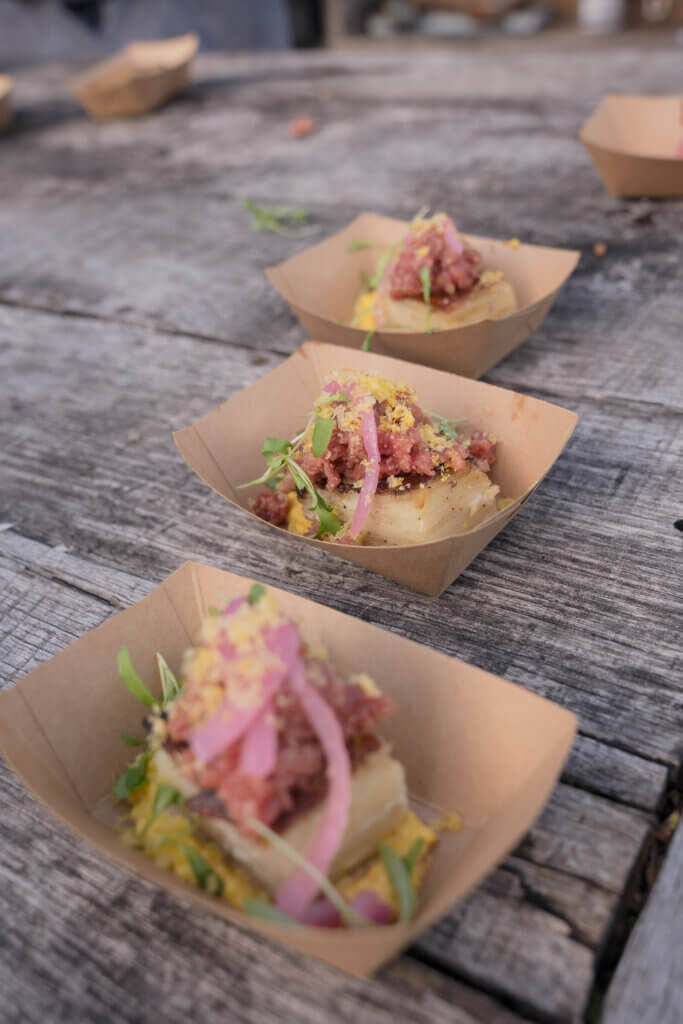
Llama tartare.

Isabel and her sister serve the yagualcro.
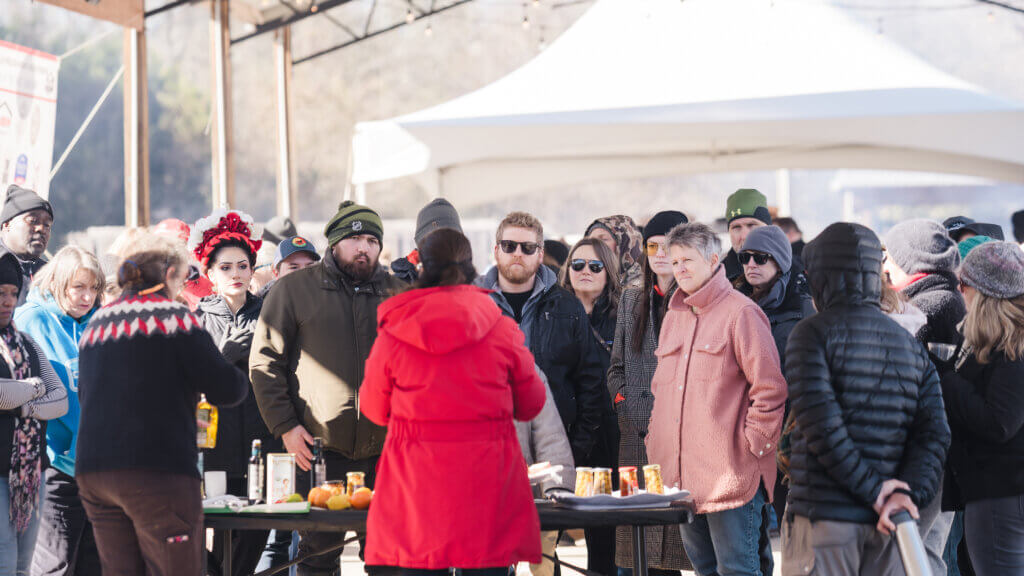
A tasting featuring various oils and olive varieties from the Latin world.
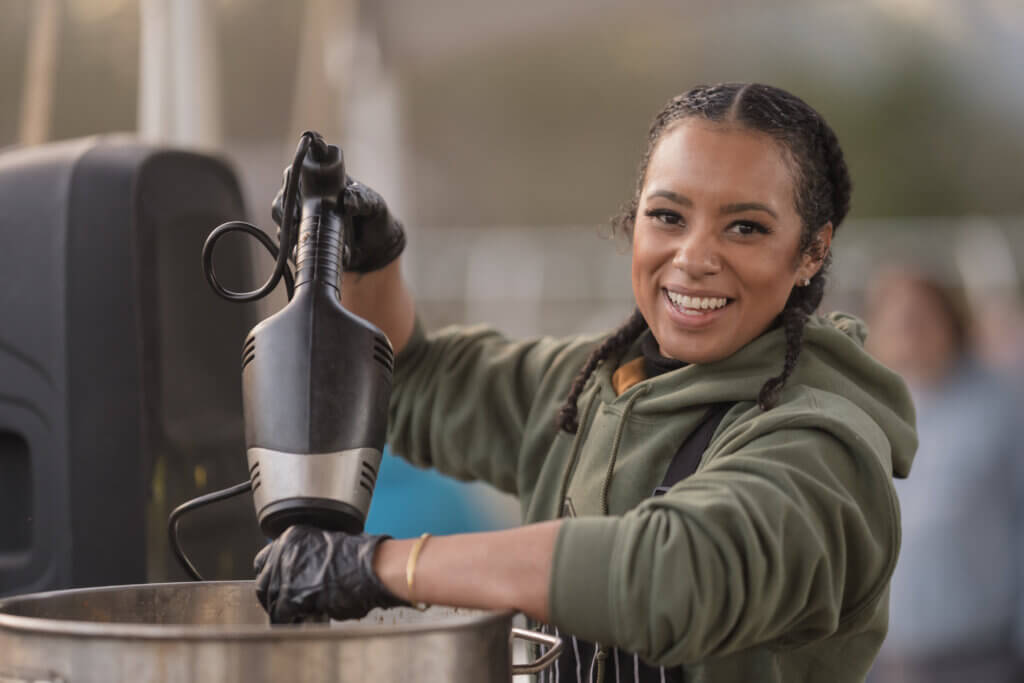
Chef Chelsia Ogletree
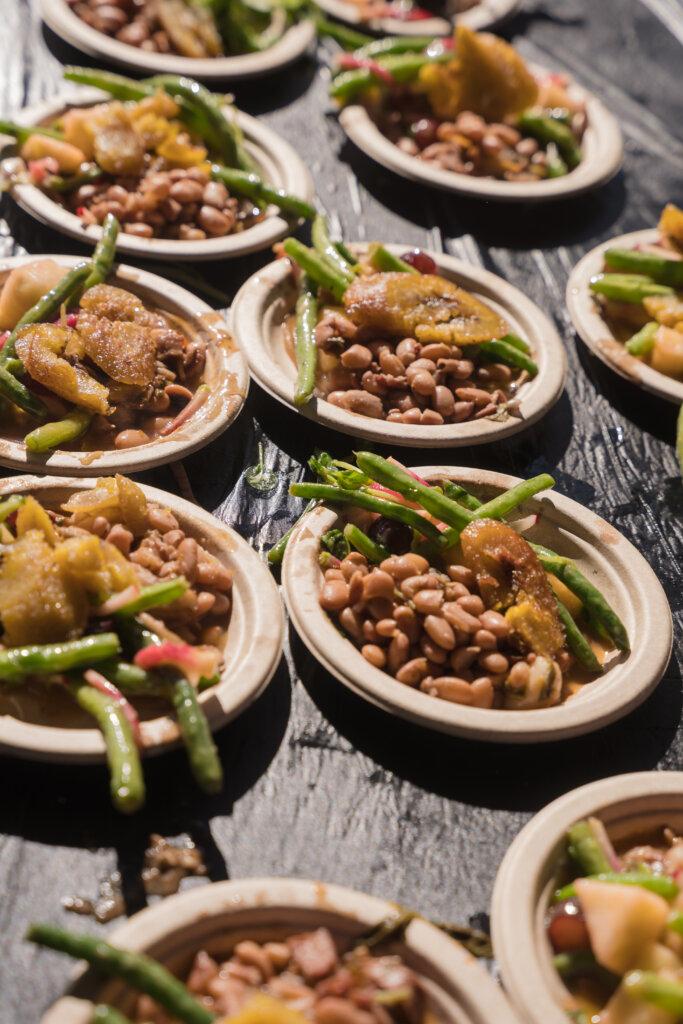
Cabrito en su sangre, a dish from Michoacán state in Mexico.
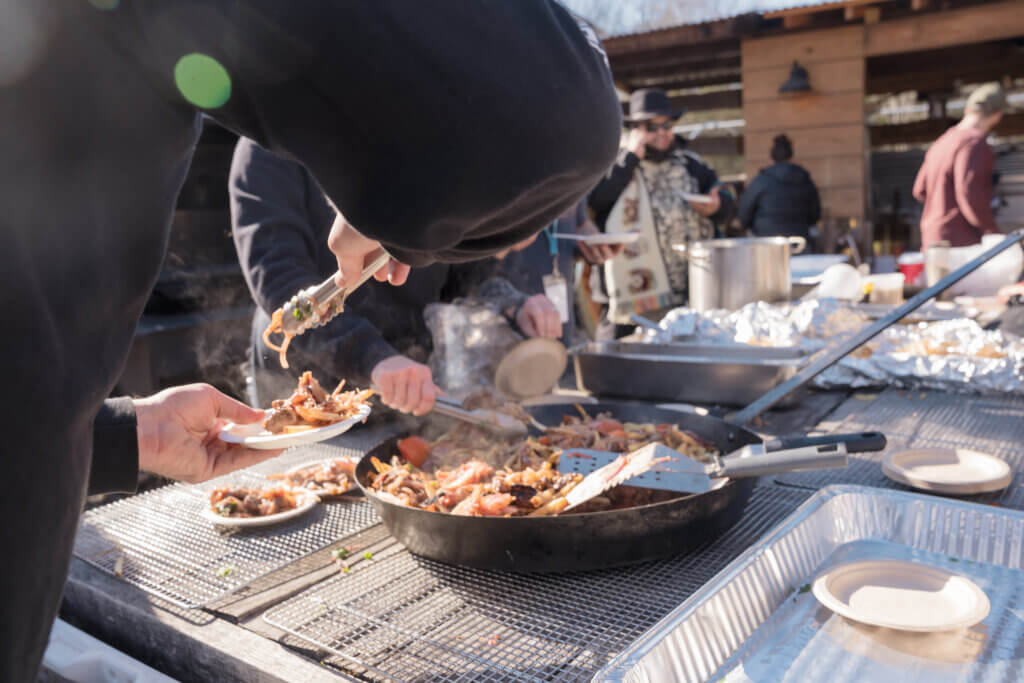
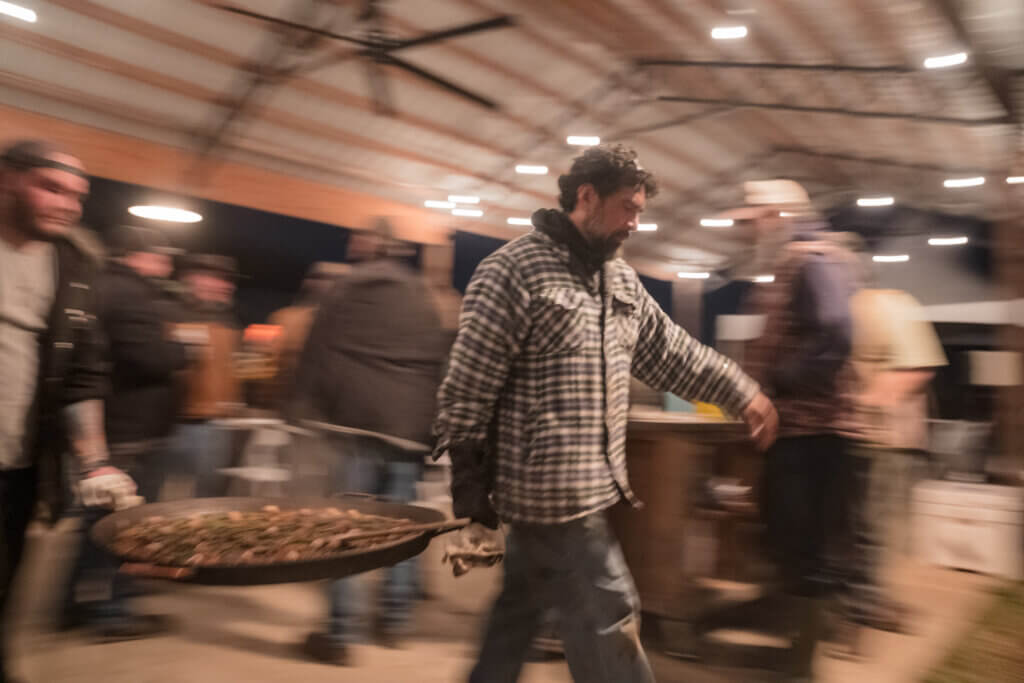
Chef Hector and Ritz-Carlton’s Juan Pablo carry the pachamanca to the VIP dinner buffet.
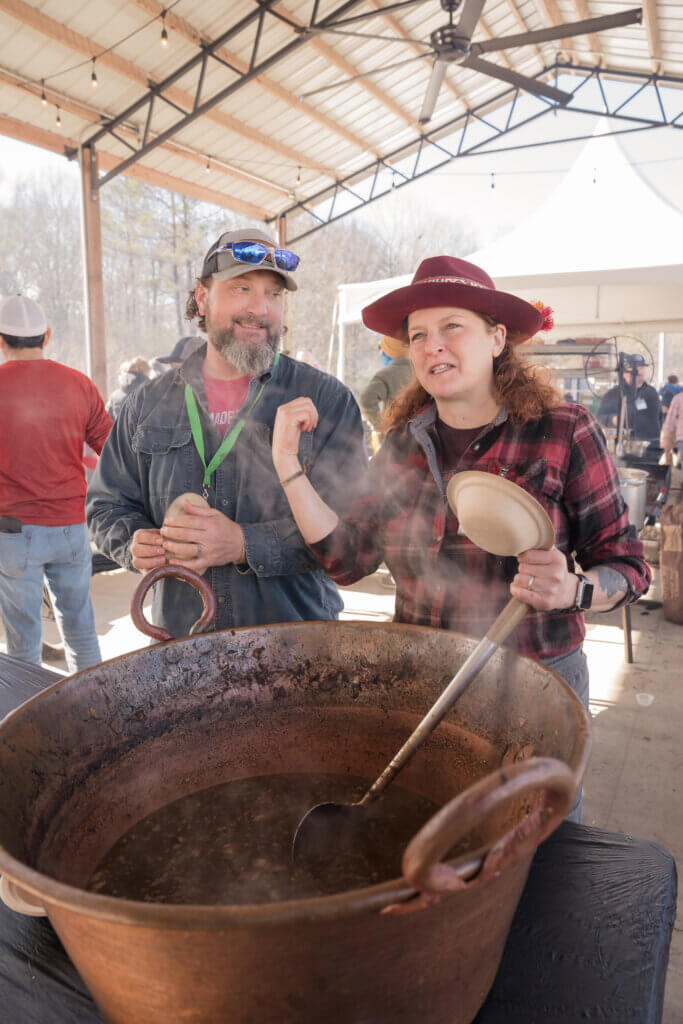
Chef Samantha introduces the Hufstelter Homestead farner who raised the goat for the cabrito dish. The copper pot was purchased on her last trip to Mexico and brought specially for Boucherie.
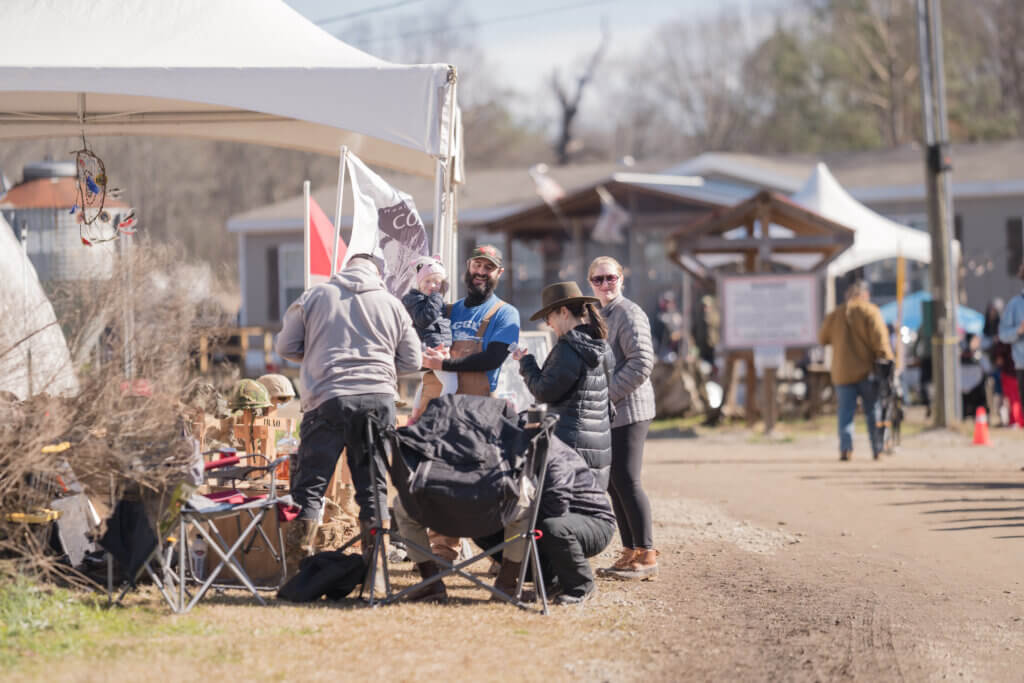
Ben Hampton and farmily.
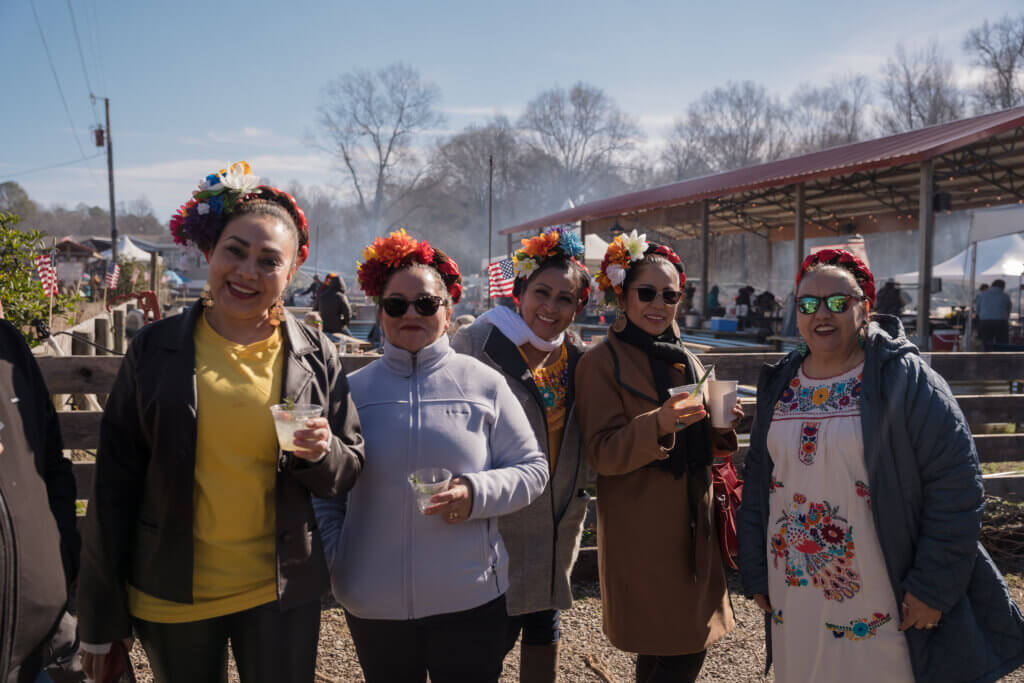
Herencia y Cultura dance company.
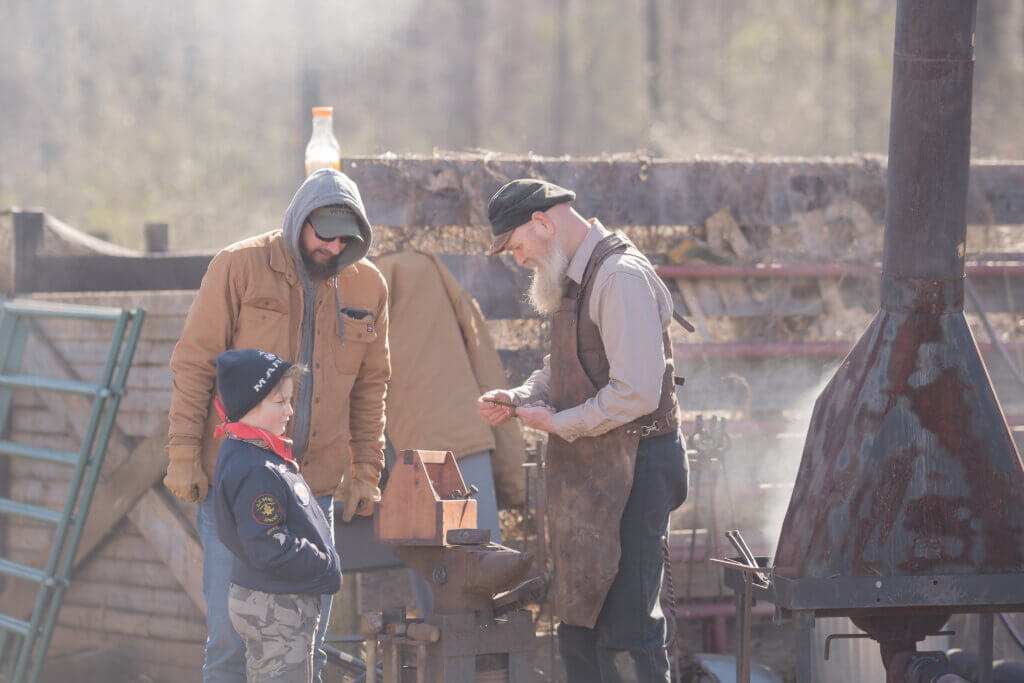
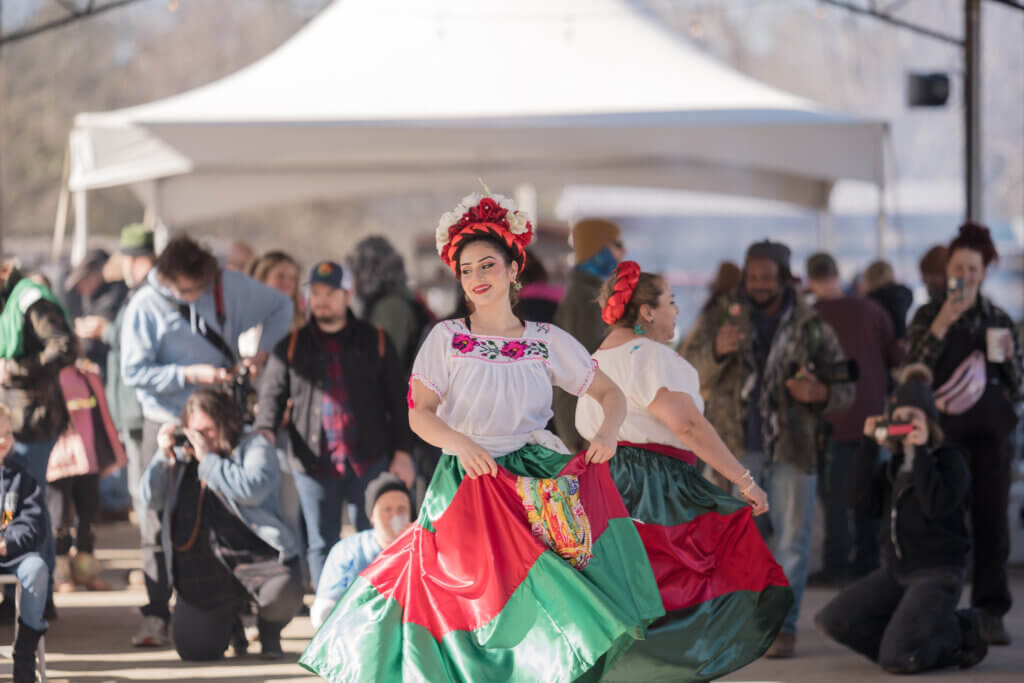
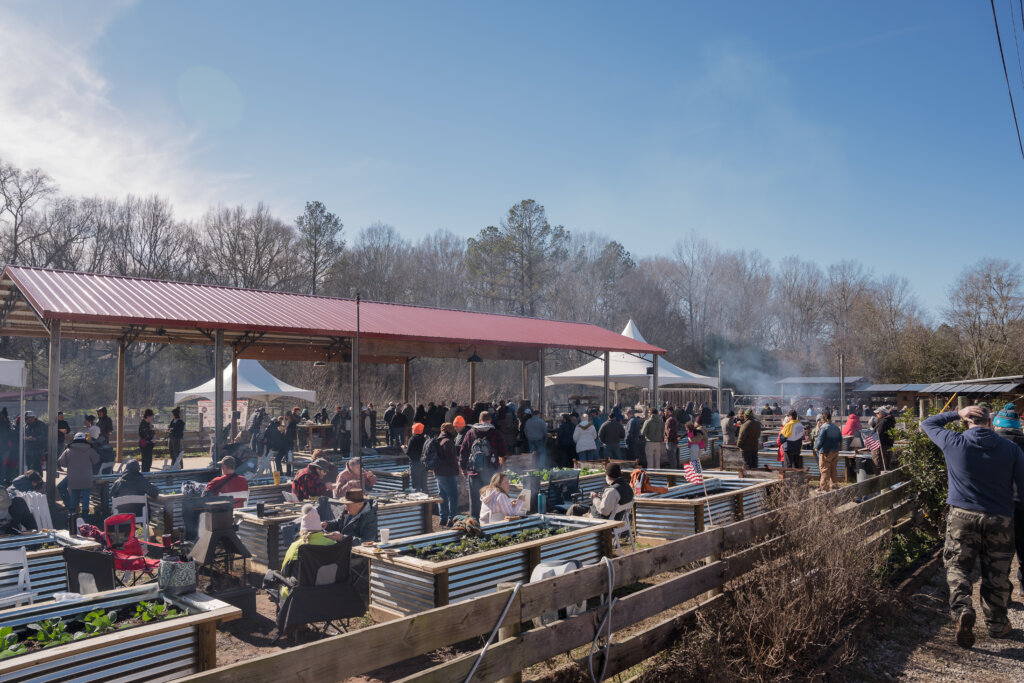
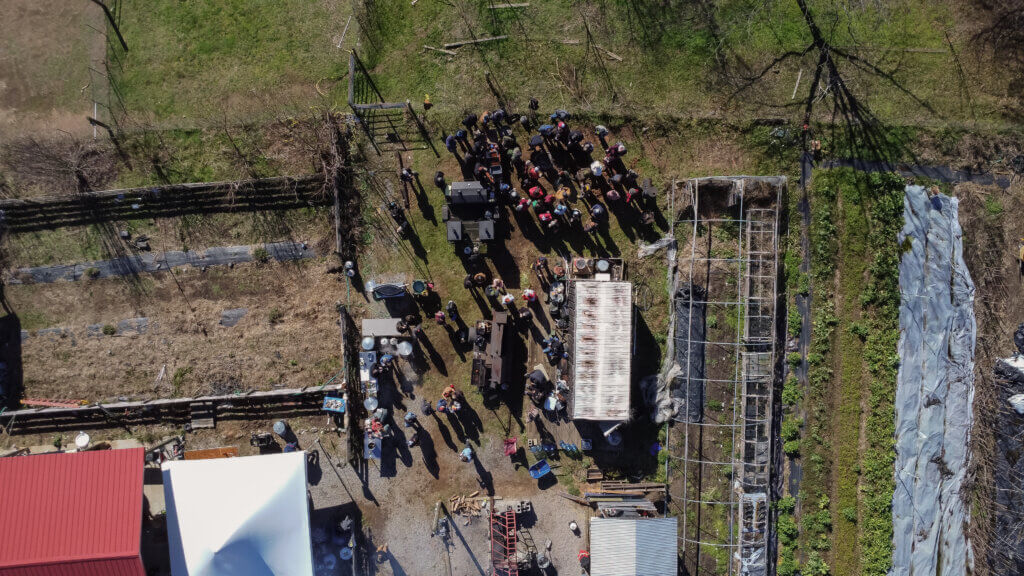
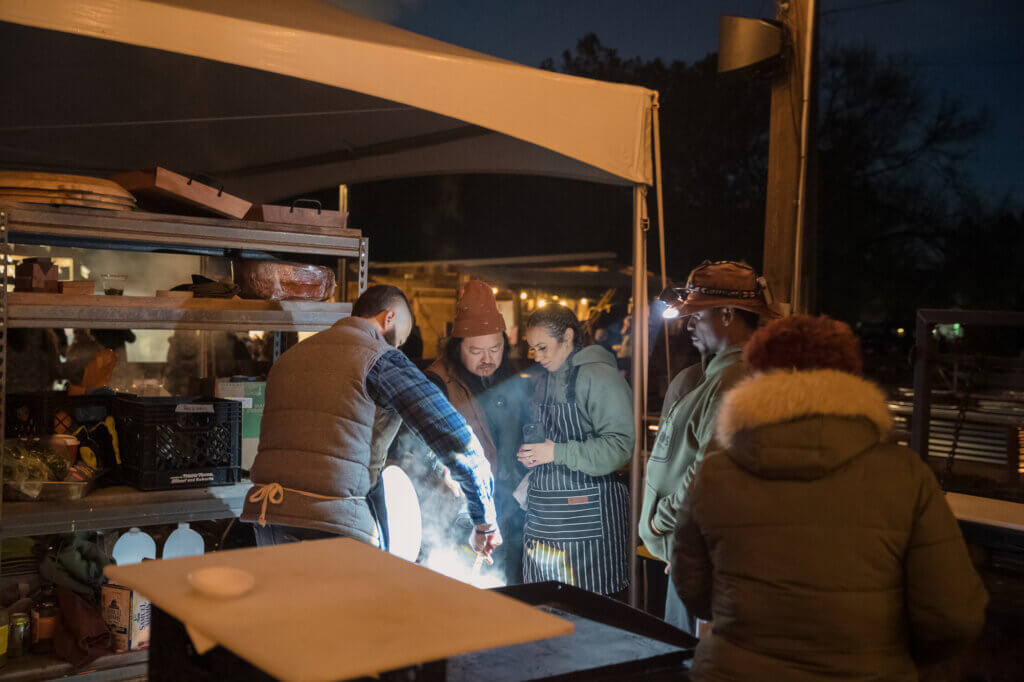
Chef Chelsia is assisted as night falls.
To learn more, visit georgiaboucheriefestivals.com and stagvetsinc.org/comfort-farms. If you or someone you know is struggling or in crisis, help is accessible and immediate. Reach out to the 988 Lifeline by calling or texting 988, or connect online at 988lifeline.org for compassionate, confidential support.
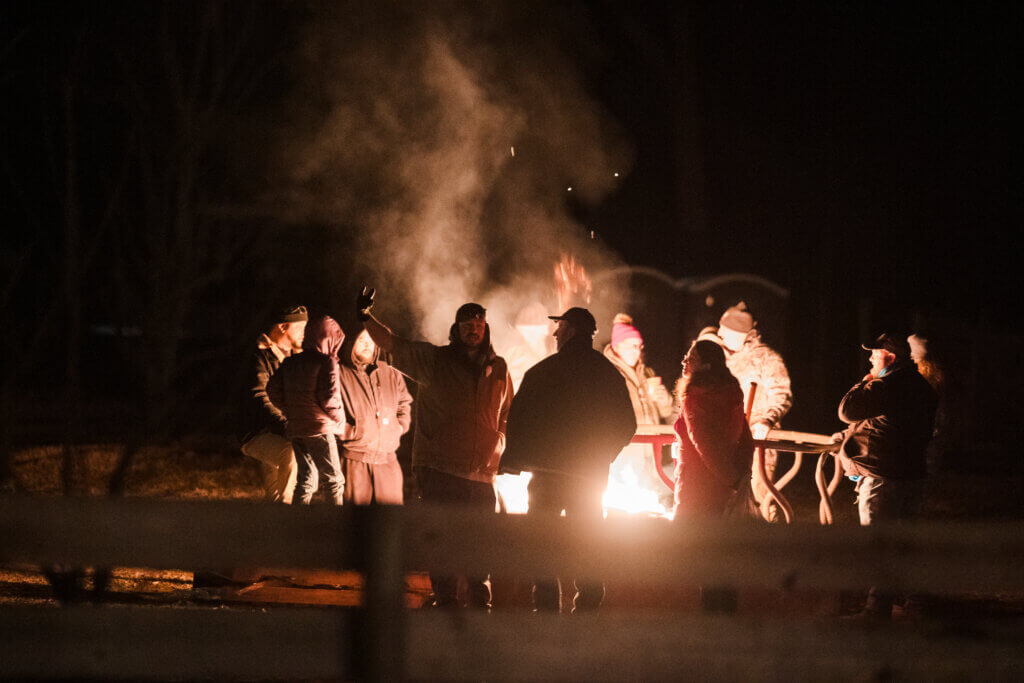
A group reflects on the day and stays warm by the bonfire before returning Sunday morning for the final events of this year’s Boucherie.

